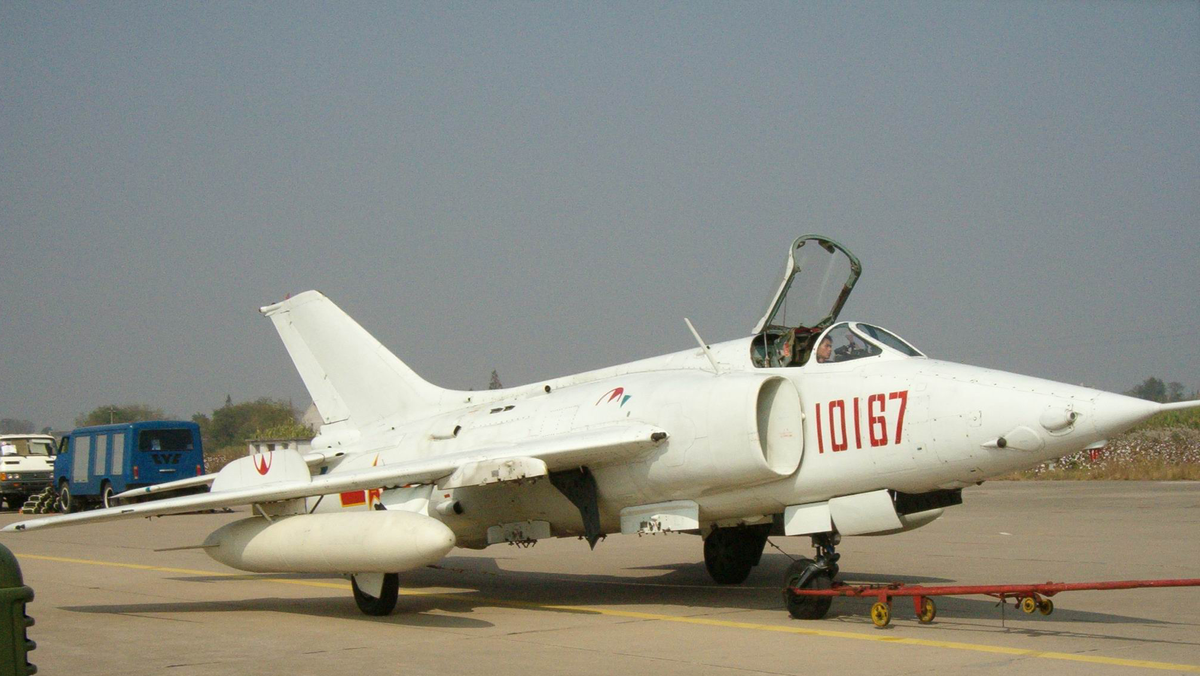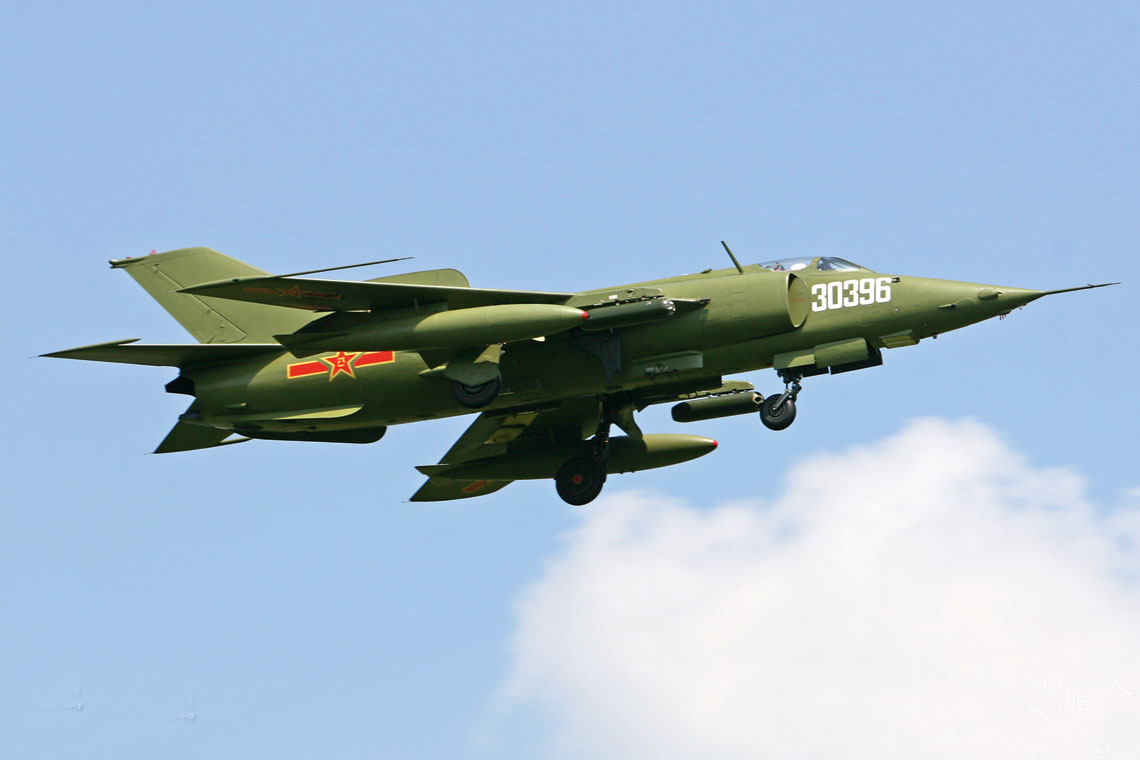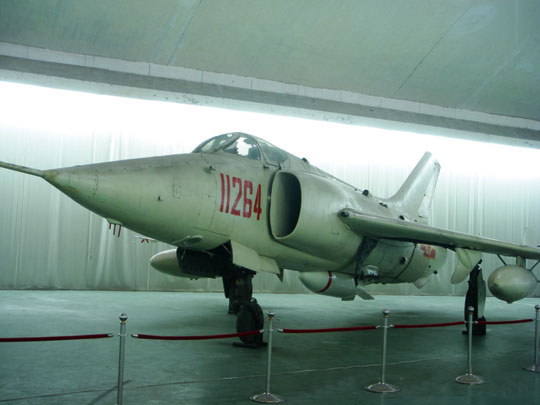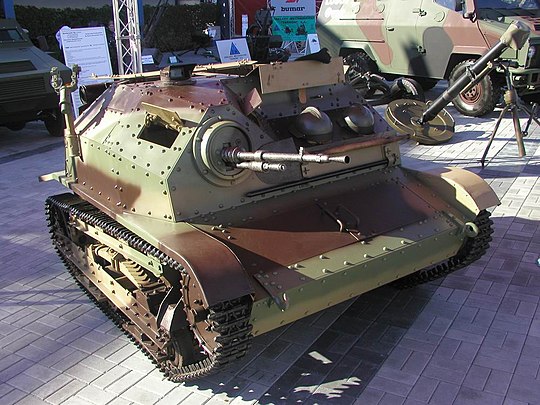
Nanchang Q-5

Q-5 became the first Chinese combat aircraft of its own design, which served 45 years in China's aviation. It was the main means of direct and indirect support of the ground forces.
The People's Republic of China (PRC) was proclaimed on October 1, 1949 by Mao Zedong after the victory of his supporters in the civil war. The defeated Kuomintang and their leader Chiang Kai-shek withdrew to Taiwan, where they formed the Republic of China. After the establishment of diplomatic relations with the USSR, a large amount of Soviet aviation equipment was delivered to the PRC. In addition, the training of Chinese students and the construction of aircraft factories began.
The beginning of Sino-Soviet cooperation in the field of aviation industry was the launch in China of licensed production of the Soviet basic training aircraft Yakovlev Yak-18 (Chinese designation: CJ-5). Four years later (July 26, 1958), a Chinese JJ-1 training aircraft took off. In 1956, the production of the Mikoyan Gurevich MiG-17F fighter (Chinese designation: J-5) began. In 1957, the production of the Yu-5 multi-purpose aircraft, a Chinese copy of the Soviet Antonov An-2 aircraft, began.
Another important step in the development of the Chinese aviation industry was the launch of the licensed production of the MiG-19 supersonic fighter in three modifications: the MiG-19S (J-6) day fighter, the MiG-19P (J-6A) all-weather fighter, and any weather conditions with guided missiles. air-to-air class MiG-19PM (J-6B).

Q-5A aircraft with a model of a tactical nuclear bomb KB-1 on the ventral suspension (the bomb was partially hidden in the fuselage), preserved in museum collections.
The Sino-Soviet agreement on this matter was signed in September 1957, and the following month, documentation, samples, disassembled copies for self-assembly, components and assemblies for the first series began to arrive from the USSR, until their production was mastered by the Chinese industry. At the same time, the same thing happened with the Mikulin RD-9B turbojet engine, which received the local designation RG-6 (maximum thrust 2650 kgf and 3250 kgf afterburner).
The first licensed MiG-19P (assembled from Soviet parts) took to the air at plant number 320 in Khundu on September 28, 1958. In March 1959, the production of Mi-G-19PM fighters began in Khundu. The first MiG-19P fighter at the factory number 112 in Shenyang (also consisting of Soviet parts) took off on December 17, 1958. Then, in Shenyang, the production of the MiG-19S fighter began, the model of which flew on September 30, 1959. At this stage of production, all Chinese “nineteen” aircraft were equipped with original Soviet RD-9B engines, local production of drives of this type was started only some time later (factory No. 410, Shenyang Liming Aircraft Engine Plant).
In 1958, the PRC decided to start independent work on fighters. In March, at a meeting of the leadership of the aviation industry and the leadership of the Air Force of the People's Liberation Army of China, headed by their commander, General Liu Yalou, a decision was made to build a supersonic attack aircraft. Initial tactical and technical plans were developed and an official order was issued for the design of a jet aircraft for this purpose. It was believed that the MiG-19S fighter was not well suited for the tasks of direct and indirect support of ground forces on the battlefield, and the Soviet aviation industry did not offer an attack aircraft with the expected characteristics.
The aircraft began to be designed at Plant No. 112 (Shenyang Aircraft Building Plant, now Shenyang Aircraft Corporation), but at a technical conference in August 1958 in Shenyang, the chief designer of Plant No. 112, Xu Shunshou, suggested that due to the very large loading of the plant with other very tasks, to transfer the design and construction of a new attack aircraft to plant No. 320 (Nanchang Aircraft Building Plant, now Hongdu Aviation Industry Group). And so it was done. Xu Shunshou's next idea was an aerodynamic concept for a new ground attack aircraft with side grips and an elongated "tapered" forward fuselage with improved front-to-down and side-to-side visibility.
Lu Xiaopeng (1920-2000), then deputy director of plant No. 320 for technical issues, was appointed the chief designer of the aircraft. His deputy chief engineer Feng Xu was appointed deputy chief engineer of the plant, and Gao Zhenning, He Yongjun, Yong Zhengqiu, Yang Guoxiang and Chen Yaozu were part of the 10-person development team. This group was sent to Factory 112 in Shenyang, where they set about designing an attack aircraft in collaboration with local experts and engineers who were tasked with the task.
At this stage, the design was designated Dong Feng 106; the designation Dong Feng 101 was carried by the MiG-17F, Dong Feng 102 - MiG-19S, Don Feng 103 - MiG-19P, Don Feng 104 - a fighter design of the Shenyang plant, conceptually modeled on the Northrop F-5 (speed Ma = 1,4; additional data not available), Don Feng 105 - MiG-19PM, Don Feng 107 - Shenyang factory fighter design, conceptually modeled on the Lockheed F-104 (speed Ma = 1,8; no additional data).
For the new attack aircraft, it was planned to achieve a maximum speed of at least 1200 km / h, a practical ceiling of 15 m and a range with weapons and additional fuel tanks of 000 km. According to the plan, the new attack aircraft was supposed to operate at low and ultra-low altitudes, as stated in the initial tactical and technical requirements, below the enemy’s radar field.
Initially, the stationary armament of the aircraft consisted of two 30-mm 1-30 (NR-30) cannons mounted on the sides of the forward fuselage. However, during the tests, it turned out that the air intakes to the engines sucked in powder gases during firing, which led to their extinction. Therefore, the artillery armament was changed - two 23-mm guns 1-23 (NR-23) were moved to the wing roots near the fuselage.
Bomb armament was located in the bomb bay, about 4 m long, located in the lower part of the fuselage. It housed two bombs, located one behind the other, weighing 250 kg or 500 kg. In addition, two more 250-kg bombs could be hung on the side ventral hooks on the sides of the bomb bay and two more on the underwing hooks, due to additional fuel tanks. The normal load capacity of the bombs was 1000 kg, the maximum - 2000 kg.
Despite the use of an internal weapons chamber, the aircraft's fuel system was not changed. The capacity of the internal tanks was 2160 liters, and the underwing outboard tanks PTB-760 - 2 x 780 liters, a total of 3720 liters; with such a supply of fuel and 1000 kg of bombs, the aircraft's flight range was 1450 km.
On internal underwing hangers, the aircraft carried two 57-1 (S-5) multi-barrel rocket launchers with 57-mm unguided rockets, each of which carried eight rockets of this type. Later, it could also be launchers with seven 90 mm 1-90 unguided rockets or four 130 mm Type 1-130 rockets. For aiming, a simple gyro sight was used, which did not solve the tasks of bombing, so the accuracy depended to a decisive extent on the preparation of the pilot for bombing from a dive flight or with a variable dive angle.
In October 1958, the construction of a 1:10 model aircraft was completed in Shenyang, which was demonstrated in Beijing to party, state and military leaders. The model made a very good impression on decision makers, so it was immediately decided to build three prototypes, including one for ground testing.
Already in February 1959, a complete set of documentation for the construction of prototypes, consisting of about 15 people, was presented to the experimental production workshops. drawings. As you might guess, because of the haste, it had to contain many errors. This ended in serious problems, and manufactured elements subjected to strength tests were often damaged when the load was lower than expected. So the documentation needed a lot of improvement.
As a result, about 20 thousand. drawings of the new, revised documentation were not transferred to Plant No. 320 until May 1960. According to the new drawings, the construction of prototypes was again started.
At that time (1958-1962), an economic campaign under the slogan "Great Leap Forward" was being carried out in the PRC, which provided for the rapid transformation of China from a backward agrarian country into a world industrial power. In fact, it ended in famine and economic ruin.
In such a situation, in August 1961, it was decided to close the Dong Feng 106 attack aircraft program. Even the production of the licensed nineteenth had to be stopped! (The break lasted two years). However, the management of plant number 320 did not give up. For the plant, it was a chance for modernity, to get involved in the production of promising combat aircraft. Feng Anguo, director of Factory No. 320, and his deputy and chief aircraft designer, Lu Xiaopeng, strongly protested. They wrote a letter to the Central Committee of the Communist Party of China, which allowed them to work independently, outside of working hours.
Of course, the project team was reduced, out of about 300 people only fourteen remained, they were just employees of the plant No. 320 in Hongdu. Among them were six designers, two draftsmen, four workers, a messenger and a counterintelligence officer. A period of intensive work "out of office hours" began. And only when at the end of 1962 the plant was visited by the Deputy Minister of the Third Ministry of Mechanical Engineering (responsible for the aviation industry), General Xue Shaoqing, it was decided to resume the program. This happened thanks to the support of the leadership of the Air Force of the People's Liberation Army of China, especially the Deputy Commander of the Chinese Air Force, General Cao Lihuai. Finally, it was possible to start building a sample for static tests.
As a result of testing the aircraft model in a high-speed wind tunnel, it was possible to refine the wing configuration, in which the warp was reduced from 55° to 52°30'. Thus, it was possible to improve the characteristics of the aircraft, which, with an air-to-ground combat load on the internal and external slings, had significantly more weight and had significantly greater aerodynamic drag in flight. The wing span and its bearing surface also increased slightly.
The wingspan of the Q-5 (after all, this designation was given to the Don Feng 106 attack aircraft in Chinese military aviation; the redesignation in all aviation was carried out in October 1964) was 9,68 m, compared with the span of the J-6 - 9,0 m. with the reference area, it was (respectively): 27,95 m2 and 25,0 m2. This improved the stability and controllability of the Q-5, which was important during sharp maneuvering at low altitude and lower speeds (typical ground attack aviation conditions over the battlefield).

